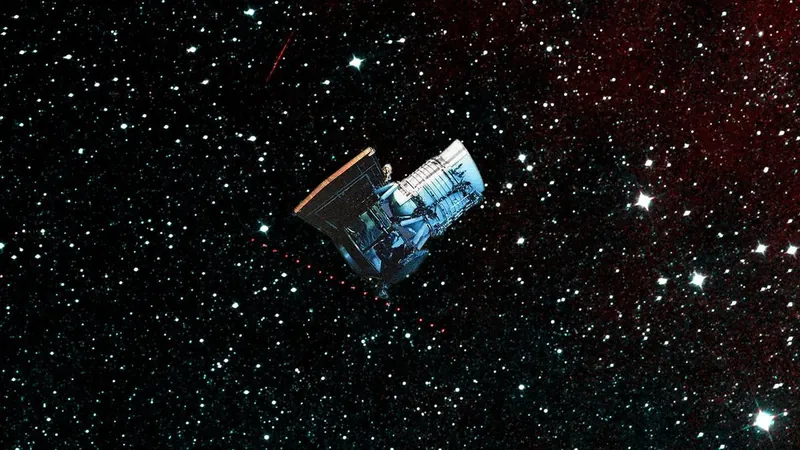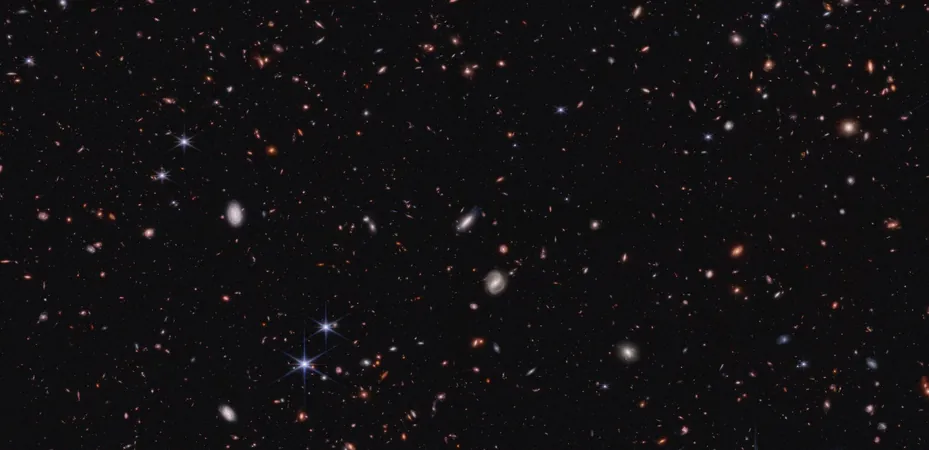
NEOWISE: NASA’s Legendary Asteroid Hunter Bids Farewell in a Fiery Atmosphere Dive!
2024-11-04
Author: Noah
NASA’s Iconic NEOWISE Spacecraft Bids Farewell
NASA’s iconic NEOWISE spacecraft, which dedicated its lifespan to hunting down near-Earth asteroids, has officially met its explosive end. After a remarkable 15-year mission, the spacecraft burned up in Earth’s atmosphere on Friday, November 1, marking the conclusion of a significant chapter in space exploration.
Confirmation of NEOWISE's End
On Saturday, November 2, NASA confirmed the loss of NEOWISE via a post on X, formerly known as Twitter. Despite the retirement of NEOWISE, NASA is not slowing down in its quest to detect rogue asteroids, relying on a robust network of partner telescopes around the globe. If that’s not enough excitement, a new asteroid-hunting spacecraft may soon be launched to carry on the legacy!
NEOWISE's Origins and Mission
Initially launched as the Wide-field Infrared Survey Explorer (WISE) in December 2009, NEOWISE was propelled into space aboard a United Launch Alliance Delta II rocket. Its primary mission was to scan the universe in infrared wavelengths for over a year, unraveling cosmic mysteries. WISE made groundbreaking discoveries, including the identification of millions of hidden black holes and the cataloging of the most luminous galaxies across the cosmos.
A Second Mission and Asteroid Discovery
However, as all good things must come to an end, the spacecraft required coolant to operate effectively. After this vital coolant ran out in February 2011, engineers placed WISE into hibernation. This unexpected downtime led to a remarkable turn of events—a second mission arose, now dubbed NEOWISE (Near-Earth Objects Wide-field Infrared Survey Explorer), redirecting its focus to asteroids dangerously close to Earth.
In an astonishing twist of fate, the repurposed NEOWISE was particularly effective at identifying these near-Earth objects. “It turned out to be pretty good at picking up asteroids,” said Amy Mainzer, the principal investigator at NASA’s Jet Propulsion Laboratory, during a briefing at the Lunar and Planetary Science Conference in 2019. This kind of luck allowed it to surpass all expectations, culminating in an extensive dataset that will be invaluable to scientists for decades.
Challenges in Space and NEOWISE's Demise
Despite its triumphant service, NEOWISE’s demise was a poignant reminder of the challenges faced in space. The spacecraft’s end was precipitated by solar maximum—the peak period in the sun’s 11-year cycle characterized by increased solar activity, including powerful solar flares and coronal mass ejections. This phenomenon resulted in an expansion of Earth’s atmosphere, dragging NEOWISE towards its fiery fate since it was unable to reposition itself due to a lack of propulsion and its low Earth orbit.
Looking to the Future
As we bid farewell to NEOWISE, the scientific community looks to the future with anticipation. With new technologies and missions on the horizon, the pursuit of knowledge about our cosmic neighbors continues. What will our next adventure in the stars uncover? Stay tuned!









 Brasil (PT)
Brasil (PT)
 Canada (EN)
Canada (EN)
 Chile (ES)
Chile (ES)
 España (ES)
España (ES)
 France (FR)
France (FR)
 Hong Kong (EN)
Hong Kong (EN)
 Italia (IT)
Italia (IT)
 日本 (JA)
日本 (JA)
 Magyarország (HU)
Magyarország (HU)
 Norge (NO)
Norge (NO)
 Polska (PL)
Polska (PL)
 Schweiz (DE)
Schweiz (DE)
 Singapore (EN)
Singapore (EN)
 Sverige (SV)
Sverige (SV)
 Suomi (FI)
Suomi (FI)
 Türkiye (TR)
Türkiye (TR)